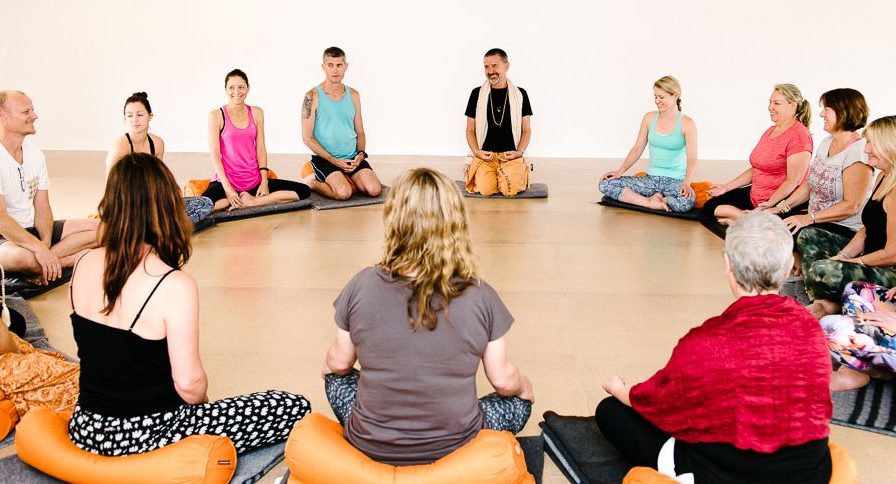I have many friends in my circle who have practiced yoga seriously for decades without practising any yoga poses. My story is somewhat similar. I am always curious about how a person discovered yoga.
Meditation – An Inner Limb of Yoga
Many years ago I meditated and played with a yoga meditation group. I use the word “play” because even though meditation is seen as serious, we chose fun and fulfilling activities that morphed us into a service community. The experience was very fulfilling mentally and spiritually and we never practised yoga poses as a group.
In those youthful days we sat cross-legged on the floor easily and comfortably. So let me correct that statement about not practising yoga poses as a group. That ability to sit still on the floor and to stand upright and still I consider not one but two yoga poses!
One activity the group embraced was the generation of inspirational thoughts, big ideas, or provoking questions. Each day a new thought was written on a blackboard outside the meditation center and many stopped to imbibe drops of inspiration.
Recently a fellow meditator recalled her story about starting yoga, sharing, “I was feeling a loss, that something was missing in my life. I passed the virtue board each day, read it and it gave comfort, food for thought.” She revealed that this was when she started analysing life instead of just existing day-to-day. She began to travel that route to work just to “read a board a stranger put out”. Curiosity led her to the meditation center. That visit started her journey with meditation and strangers became her friends – a community.
The Meditator – A Promising Therapeutic Yoga Teacher
What would make a meditator with little or no experience with poses a good candidate to teach yoga for wellness? Although there are many benefits I will highlight three that lead me to this conclusion.
More receptive mind: This means having an increased ability to focus and concentrate. What a fertile environment for learning!
Less reactivity: Another valuable jewel in the jewelry box of the meditator is the ability to put some distance between herself and an emotion. She is less reactive to situations and people. This power can be seen as the ability to accept uncomfortable states without reacting automatically. That’s benefit two.
Less stressed: From time to time situations that create stress pop up in a learning group. Someone with a more reactive nervous system experiences its fight/flight/freeze response more often and anxiety and depression. Learning requires receptivity. Benefit number three is the experience of less stress and more receptivity.
With a state of readiness and a willingness to learn and teach basic poses, in my opinion a meditator is indeed eligible to undertake therapeutic yoga teacher training.




